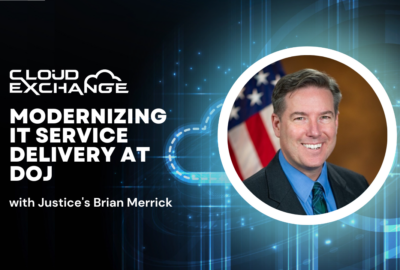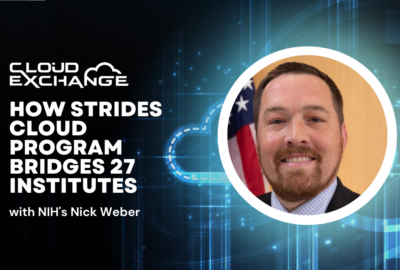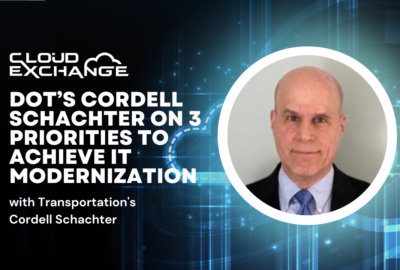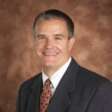

Given the continued teleworking of federal employees, agencies need visibility across their infrastructures and all devices to manage security and build resiliency,...
In adapting to the new era of continued mass telework using cloud applications, agencies must give fresh thought to securing end user devices.
Peter Romness, cybersecurity principal for the CISO Advisor’s Office at Cisco Systems, put it this way: “We have users, we have all of these devices, and then we have all of our data — and all of our applications. They’re no longer in our nice little data center in our own little environment. They’re everywhere.”
The result? The attack surface is larger and more amorphous than in the network perimeter days. Although hackers have many ways in, evidence shows email phishing still tops the list of attack methods, Romness said during the Federal News Network Cloud Exchange 2023.
His advice for chief information security officers begins with thinking in a zero trust way. Zero trust prompts the use of measures to ensure that a username and password actually belongs to the person associated with them. Romness said that he does see agencies increasingly adding multifactor authentication (MFA) to their access routines.
“The cool thing about multifactor authentication is that it can be implemented very quickly,” he said. Plus, smartphone code-generating apps have replaced single-purpose key fobs, making MFA easier for users too.
Romness said that when something bad does happen, agencies need resilience to minimize the damage and get back to normal quickly. The challenge comes from the sheer number of applications, data sources and devices in the average federal organization.
“The ability to manage an appropriate cybersecurity posture has become one of the major struggles,” he said. “And for most people I talk to, even if you have the funding to buy all the tools and fund the people you need, oftentimes you can’t find the people.”
Agencies therefore turn to consolidating and automating their cybersecurity operations, Romness said.
What makes any cybersecurity measure difficult, he said, is a complicated, multicloud environment.
“You may have your data in the AWS cloud, or the Azure cloud, or the Google cloud, or the Oracle cloud, or you may have it all over the place and in multiples of those clouds,” Romness said. “They all have security tools inside of them. But they’re all different.”
The same holds true for applications and data.
Cisco is working on methodologies to “make it so that you can manage your security from one place, and it doesn’t matter which of those clouds you’re in. And it doesn’t matter if it’s from your private cloud that you’ve created,” he said.
The goal is to help CISOs with end-to-end security management, including devices.
“From user to device, to whether it’s web or email, and all the way to your applications, how can you see it all?” Romness said. “And that’s where we’ve started to put our efforts — into making you have one place that you can see everything.”
Whatever approach an organization takes to cyber, remember “cybersecurity needs to be a team sport” and is not just the purview of the CISO, he said. “I get to go around the country talking to chief information security officers, and one of the main topics they have is, ‘How do I bring along my organization in this struggle?’ ”
Solid cybersecurity takes the right tools, training and organizational buy-in, Romness said.
“We have security tool sets, but also really key is bringing on upper management. I call it managing down and managing up.”
To read or watch other sessions on demand, go to our 2023 Cloud Exchange event page.
Copyright © 2025 Federal News Network. All rights reserved. This website is not intended for users located within the European Economic Area.




Cybersecurity Principal, CISO Advisor’s Office, Cisco Systems

Host, Federal Drive, Federal News Network

Cybersecurity Principal, CISO Advisor’s Office, Cisco Systems
Peter Romness is a the Cybersecurity Principal in the Public Sector CTO Office at Cisco Systems Inc. He has been helping Government customers achieve their missions for almost 35 years at companies such as Cisco, Hewlett-Packard, AT&T and Panasonic. He is focused on helping protect Government networks from cybersecurity threats. His responsibilities include promoting Cisco’s thought leadership within the Cybersecurity and IT communities and works with policy setting organizations to make sure they are aware of the most advanced cyber defense capabilities. He works closely with NIST and is a contributor to multiple NIST SP1800 series documents. He is also responsible for bringing cybersecurity solutions to market and developing new cybersecurity solutions for US governments. Though Peter has an engineering degree, his main goal is to make cybersecurity easier to understand and take action upon for non-technical business leaders.
In his spare time, Peter enjoys his family and friends, outdoor sports, travel, and sports cars.

Host, Federal Drive, Federal News Network
Tom Temin has been the host of the Federal Drive since 2006 and has been reporting on technology markets for more than 30 years. Prior to joining Federal News Network, Tom was a long-serving editor-in-chief of Government Computer News and Washington Technology magazines. Tom also contributes a regular column on government information technology.
